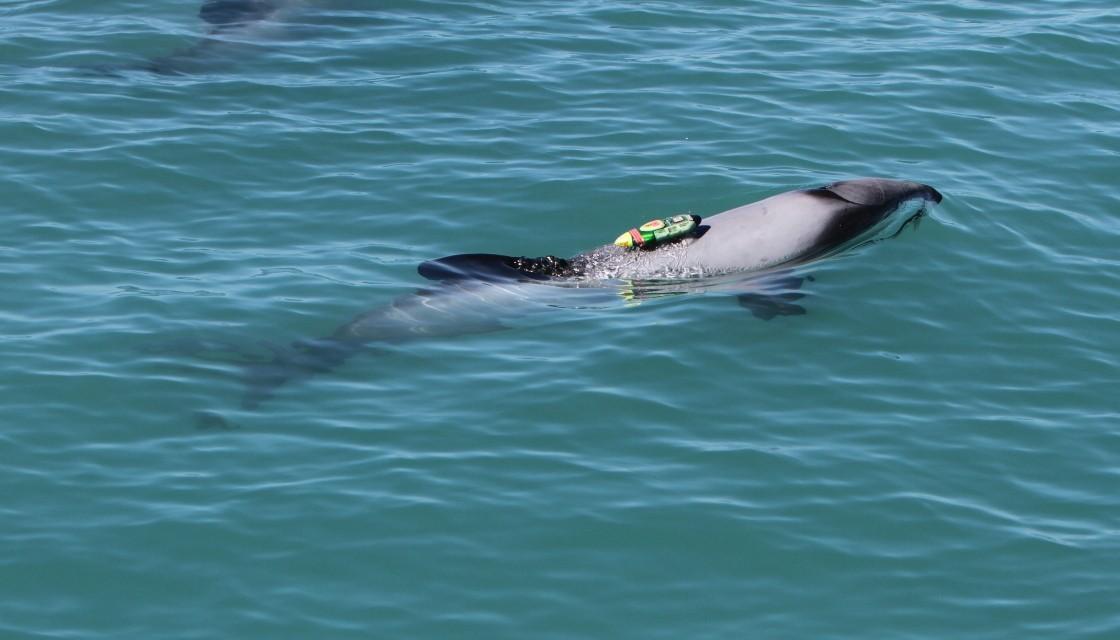
STRICTER MARINE PROTECTIONS COULD BE COMING AFTER 'AMAZING' DOLPHIN BEHAVIOURS DISCOVERED
Stricter marine protections could be on the cards after incredible new data from our endangered Hector's dolphins reveals previously unknown behaviours.
The Cawthron Institute is monitoring the dolphins with suction cup tags, and found they dive much deeper, and hunt much further off the coast than scientists realised.
The D-Tags, digital acoustic recording tags, were attached to the dolphins by using a pole, and it's the first time this technology has been used on New Zealand dolphins.
"They'd have a little shake and check it out - their mates might come have a look, but then they'd be back on the boat bow riding with us," said Cawthron Institute marine ecologist Deanna Clement.
The little tags record a huge amount of data - such as location, movement, acceleration, 3D imagery, and even the acoustic signals dolphins are sending and receiving.
Until now these marine mammals have only been studied from above the water.
"But they only spend 10 percent of their time at the surface - so we don't know what they do underneath," she said.
The precarious job of sticking the tags on the dolphins is up to Mike Ogle from the Department of Conservation.
"I had a rope tied around my waist so I didn't fall in front of the boat or on a dolphin, that gave you a good bit of purchase - you hook your feet around the bow and then just wait for the dolphins to pop up in front of you," he said.
Of the 19 attempts to tag dolphins, 11 managed to stick on.
"To get some success on little fast moving dolphins was great. It was the first time I'd seen this variety of data collected on one device, it was nothing short of amazing," said Ogle.
The tag stays on for up to 24 hours and once it's fallen off the dolphin, it's recovered by the team.
The results reveal the dolphins are diving deeper than previously thought - about 120 metres - and swimming further offshore at night time.
"We have quite few protective areas meant to take care of these animals, but seeing they're moving outside of those, so while it's protecting during the day, maybe it's not during the evenings," said Clement.
Another key finding was the dolphins' strange fishing technique.
"These guys dive down and when they're going after something on the bottom, they roll on to their back, go along the bottom upside down, or kind of sideways, then pop back up," she said.
"Interestingly, that could have a real effect on how these guys are around net. If they are focused on the bottom, focused on the fish they are not going to see anything in the water in front of them."
Marine protected areas limit human activity such as mining, seismic work and commercial fishing. And this latest research could result in more custom-made protections.
"We'll have a much better understanding about if we have set-netting limits, of where they can set a net and trawl off the coast, and say 'is that far enough?'," Ogle told Newshub.
"We need to be more nimble and I think this will give us some of the information we need to be able to do that. It has a lot of implications for how we protect them," said Clement.
The researchers are still analysing the data, but are looking at whether their suction cup tags can be used to monitor the critically endangered Māui dolphins.
"There's lots of questions around Māui, how they're doing, why they aren't reproducing so much - these could be helpful to begin looking at what their everyday lives are like, we can then tease apart how to help them best," said Clement.
Ogle said the Department of Conservation is keen to gather more data on Māui dolphins.
"That's really where we need to get urgently," he said.
The Department of Conservation and Ministry for Primary Industries are now reviewing the data from the Hector's dolphin research and are looking at how to implement it.
2024-06-29T06:41:41Z dg43tfdfdgfd